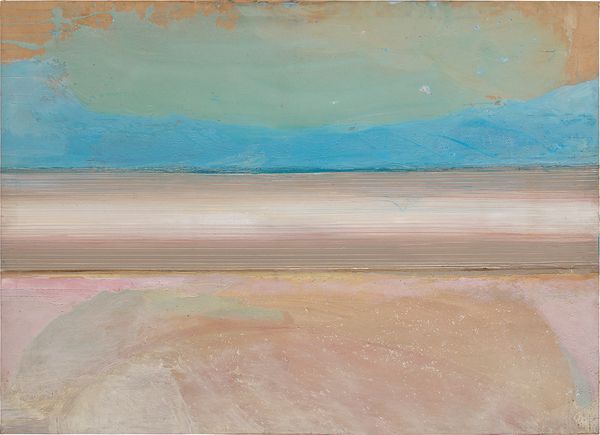Ed Clark Untitled (Acrylic #1) from the series Louisiana, 1978. Estimate: $200,000-300,000.
New Now at Phillips New York, 4 March.
The specificity of place has long been a keystone for artists, even defining their careers to a degree—Monet’s Giverny, Cézanne’s Mont Sainte-Victoire, Mondrian’s Broadway. Deviating from this tradition, abstract painter Ed Clark found inspiration from a variety of exotic locations, which became integral in his groundbreaking oeuvre.
During Clark’s visit to his friend and fellow artist Jack Whitten’s home on the island of Crete in 1971, he executed about a dozen or so pastels, as he did not have access to acrylic. Reflecting on these works back in New York, Clark felt as though they profoundly embodied the color and light of the island. From then on, Clark would make travel and the manifestation of those places in acrylic and pigment a tenet of his studies in abstraction.
No matter what I do, there's not a day that I'm not an artist.
— Ed Clark
Visiting such far-flung destinations as Crete and Paris, Bahia, Egypt, and Nigeria and even more domestic regions such as his home state of Louisiana, Clark physically manifested each locale by utilizing luscious colors inspired by his individual impressions of these places. He defined each environ through his interaction with the specific light and color of those particular moments in time and place. Painted in 1978, Untitled (Acrylic #1) from the series Louisiana is the largest and one of the earliest paintings by Clark ever to come to auction and is a perfect encapsulation of his particular regard for place as translated into abstract form and color. Here, Clark captures the beauty of returning to Louisiana in a canvas that is comprised of three discrete sections, seemingly representative of the earth, air and water of the Delta region. These pastel hues meld together in arching forms evocative of the ways in which the Delta can be defined by all three elements at once.
Bisecting the canvas is one smooth brushstroke, broomstroke really, that radiates near-white light from the center and then shifts to warm pinks and sandy browns at its edges. Clark often experimented with white as a base for bright colors, creating a source of light within the paint. Here, we see that luminescence emanating from the horizon line before arching away in the warm blue-greens of the upper register and welcoming speckled pinks of the lower register. The incredible balance in the composition begs for the painting to be viewed first from the middle and then back and forth between the lower and upper regions. Clark’s use of the push broom meanwhile amplifies the importance of the color, revealing subtle but powerful differences in hue, saturation, and light in each region of the canvas. The sensitivity and understated power of this painting readily manifest the importance of his experience working from the context of a given location.
